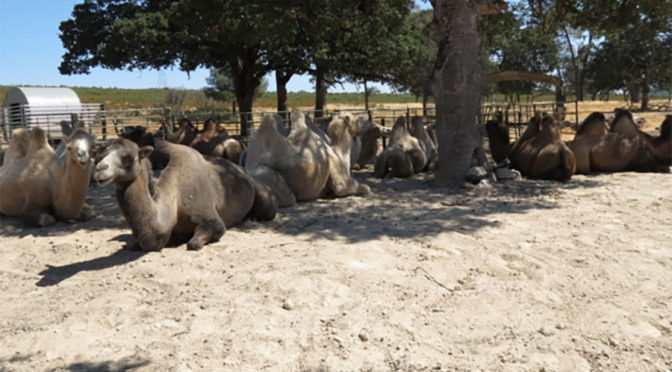End of Summer
“Separate-“anythings”-seeking-unity is the principle of falseness. Separateness cannot achieve unity. Unity is a prior condition that must enforce itself. If this is clearly understood, then it will become obvious what must be done, and what must not be done (or allowed to continue), in any particular circumstance.”
Excerpt from the essay Reality-Humanity, Self-Liberated From The Stave in the Wheels, from the book Not-Two Is Peace by Adi Da Samraj (2007)
Fear-No-More Zoo is about including the non-human world in the Great Reality Consideration that all beings are involved in—the truth that, at heart, all beings are one. This is a powerful consideration in the company of non-humans. Fear-No-More Zoo provides a unique circumstance in which humans are invited to recognize and appreciate how much we share with the non-human world, versus apparent differences. This understanding serves the awakening of humans to transcend our presumptions of superiority and obliges us to stand as allies, friends, and protectors of the entire non-human world.
Camels
We created a new “dust bath” in the shade for the camels, which is comprised of chalky, sandy dirt infused with large amounts of anti-parasitic ingredients such as diatomaceous earth, agricultural lime, and borax. As you can see in the photo at the top, the herd has been enjoying their fresh, new dust bath very much.
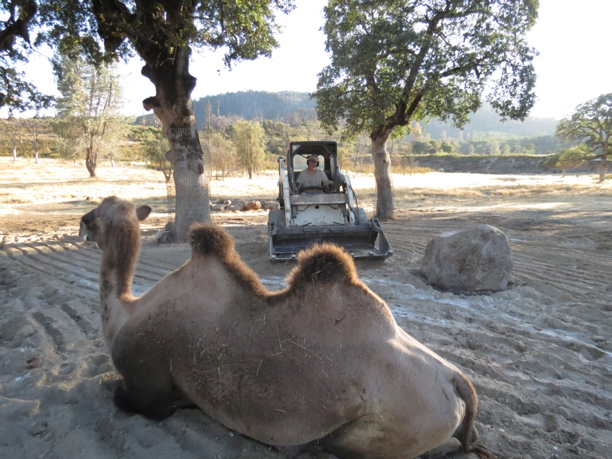
This summer’s heat has been intense and relentless and has brought a lot of flies. Fly season typically occurs at the very beginning of the heat and then subsides, but this year it has been consistent throughout the summer. The most pressing issue this has presented was with Purnimama’s flopped hump, underneath which she developed sores from heat and sweat. We have been warding the flies off and applying multiple medicinal powders and salves. Now the hump is well on its way to full recovery. Peaceful Baba has been staying in the vet area to keep her company. We are developing a further care plan for the two elder siblings of the sacred camel herd to ensure they are strong and well-fortified as we head into the winter months.
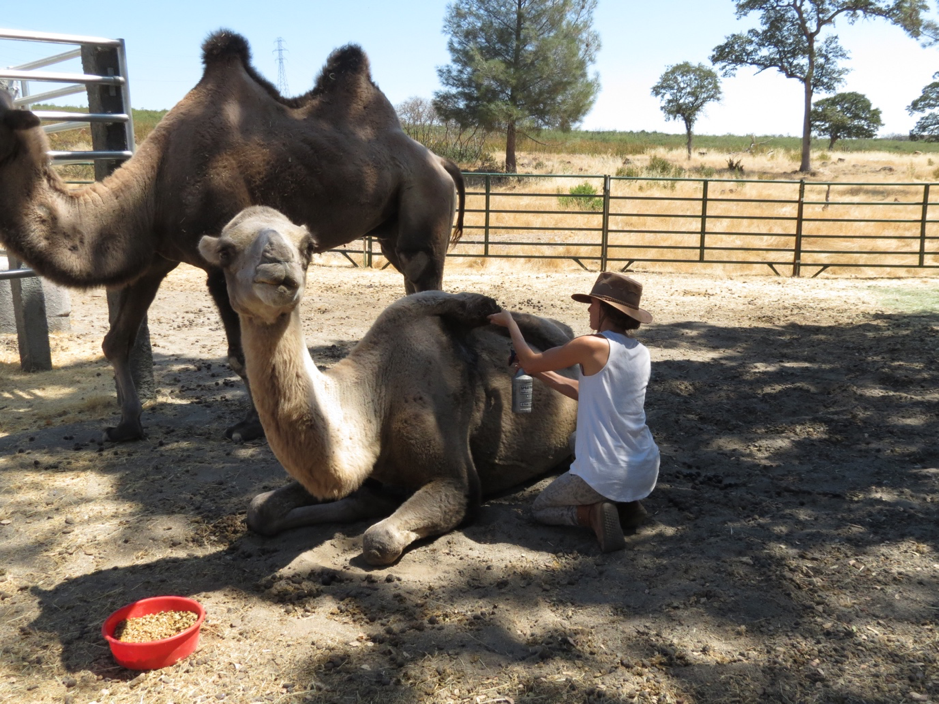
The herd otherwise has been doing really well. HiHo, who has been one of the trickier characters of the herd, has been extremely polite. He now requests to receive brushings and pettings that he would normally turn down. HiHo would always slyly lead to chewing on people until being told to leave. Now he corrects himself before the humans have to, and instead either politely walks away or stands quietly and respectfully with balanced feeling attention. It has been really nice to feel HiHo in such a relaxed and peaceful way.
In general, all of the camels remain very well socialized and are growing in their acceptance of handling. Most offer their heads and allow their ears to be stroked, which signifies great trust. They are such gentle loving beings.
Llamas
Kriya and Apple Pie are continuing to do very well. It has been interesting to observe how Kriya, who was never trained or handled in her life prior to last year, has progressed very quickly to being incredibly calm and easy to halter, whereas Apple Pie, who was handled all her life, finds it quite difficult to stand still and receive a halter.
Kriya has also made advancements walking on a lead rope outside of the training corral. She’s no longer bolting and is learning to follow along in a relaxed manner.
Apple Pie is extremely intelligent and demonstrates a lot of spunk. This, along with her previous experiences where she was cornered and grabbed in order to halter have made her training and handling more challenging. Understandably, she is on guard and very self-protective. This technique for catching llamas is typical since they are not inclined to being very social with humans, but there is another method that we use for haltering that is much more pleasant for both llamas and humans.
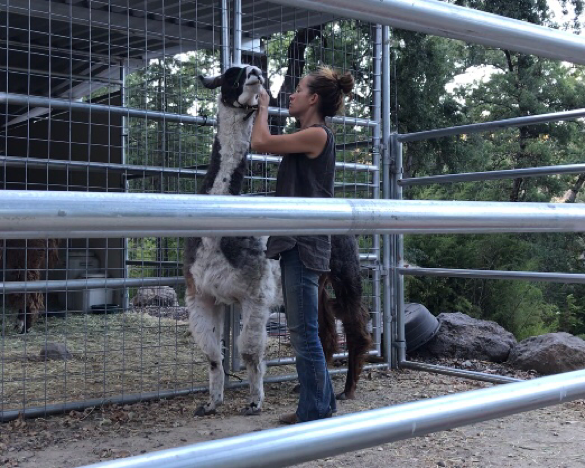
The training approach that we chose for the llamas has been really effective for Kriya, but with Apple Pie, we must first undo what she has learned so far in terms of evasive maneuvers in response to what she perceives as being “grabbed.” We are exploring different positive reinforcement strategies, but, most importantly, we’re accepting where she is at and very intentionally not pushing her beyond what she chooses to accept and participate with. She actually loves to do training and willingly participates, but she has very clear boundaries. Overall, she appears to be enjoying Kriya and her new environment very much.
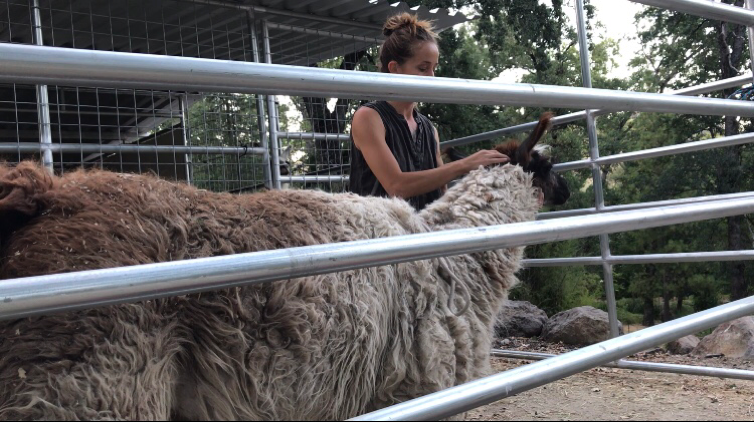
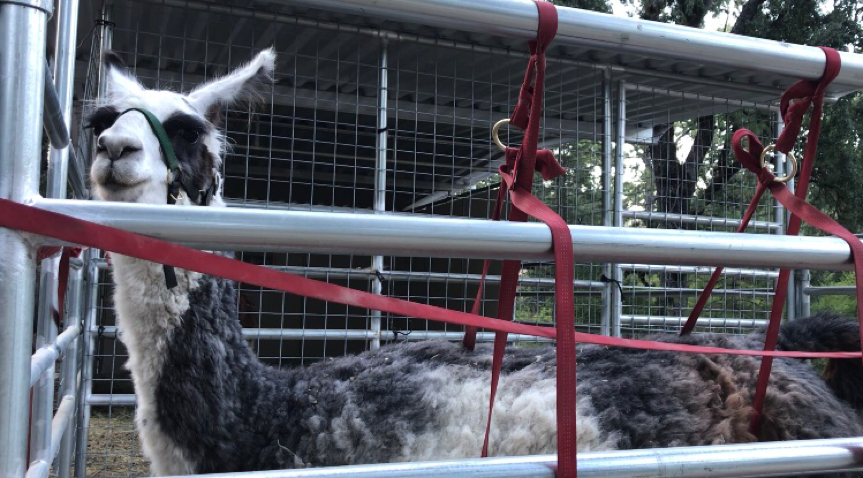
We recently completed an important tree service project and removed a large, dead poplar tree in the bamboo gardens of the llama enclosure. Thank you to Jonathan Greene and Scott Gough whose expertise and help was invaluable.
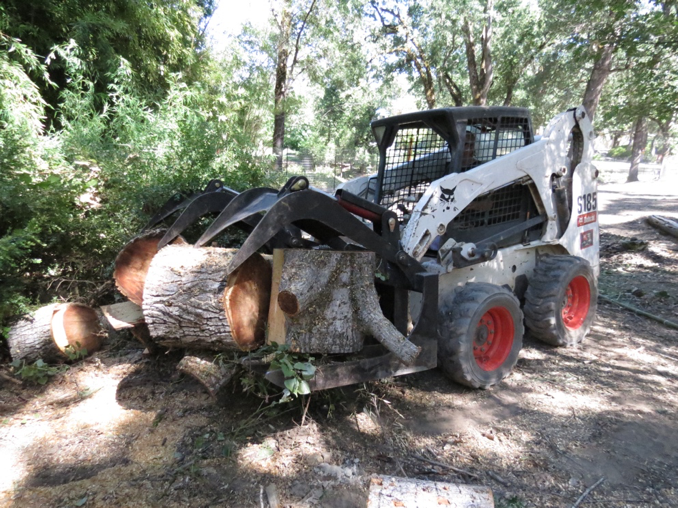
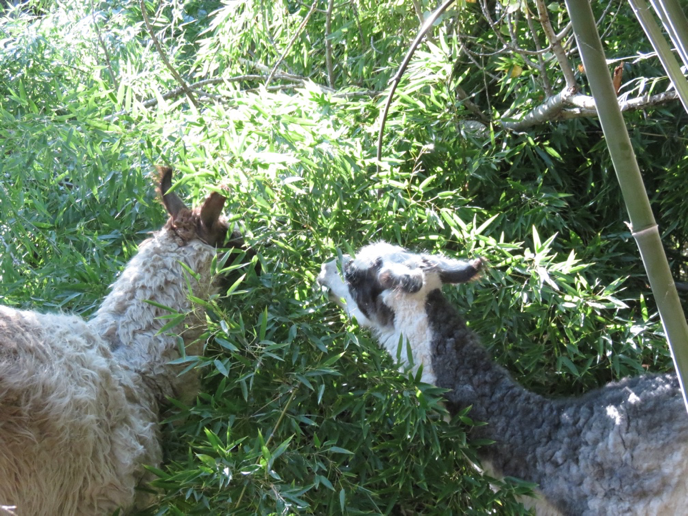
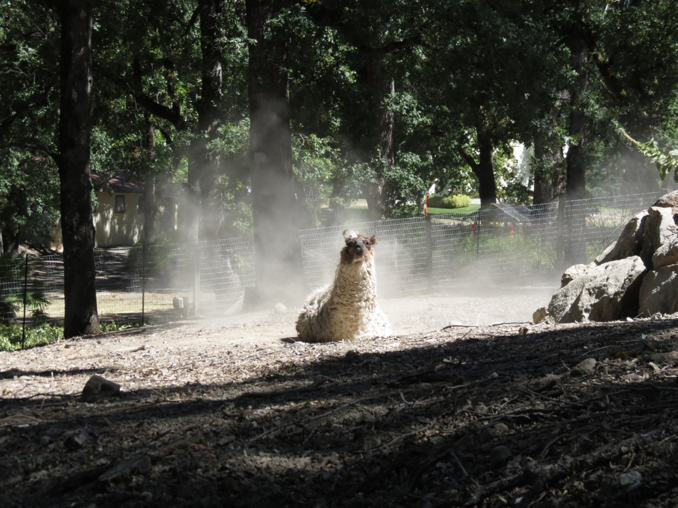
Horses
The horses are doing well. They have enjoyed spending time out of the paddocks roaming the entire retreat area of the sanctuary. Free roaming a larger area stimulates the horses to behave more like a wild herd would, banding together and moving to different areas, able to follow their natural curiosities. The horses get great exercise and are very happy and satisfied when free roaming.
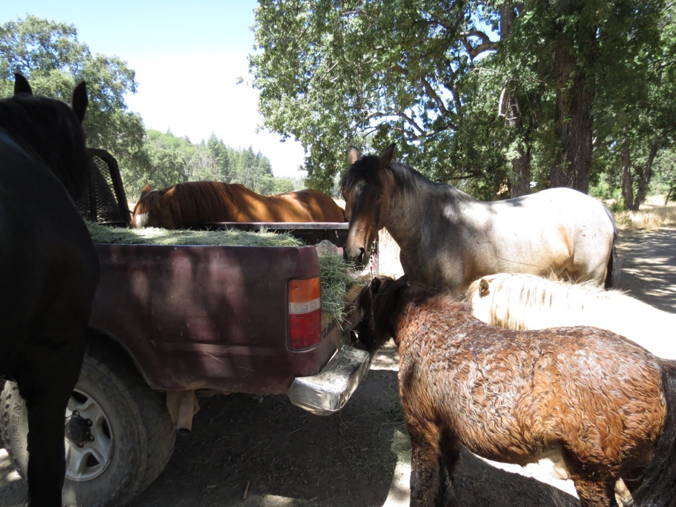
Recently all of their hooves have needed tending due to access to some of the still wet areas around the spring-fed ponds. The sole and frog parts of the hooves have wanted to exfoliate and their hoof walls have grown quickly since their last trim.
Shady has enjoyed being hosed down on hot days, while the others watch from afar, intrigued but unsure. Fiona Syme and Lena Jenkins, who also serve the horses, said that Shady used to be a swimming coach for other horses who were new to water. Shady would lead them into the lake with her confidence. Little Drench has tolerated some spray from the hose but not a full bath.
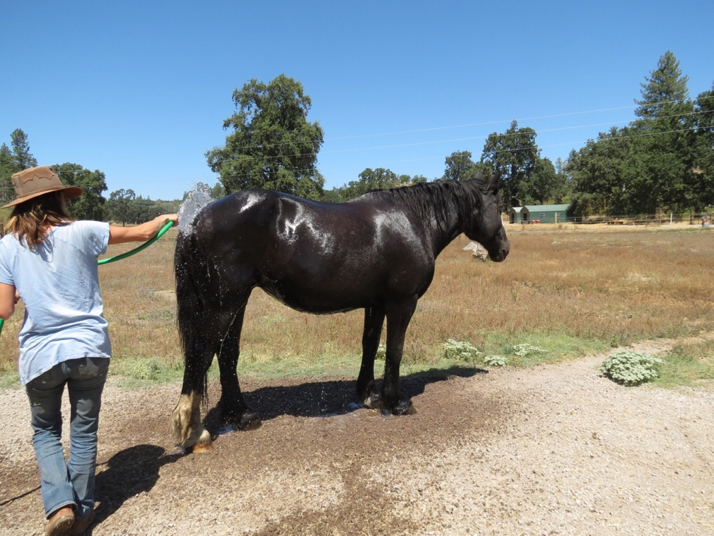
Goats
Bamboo is now fully integrated with his new goat herd. They have been enjoying a very happy summer together.
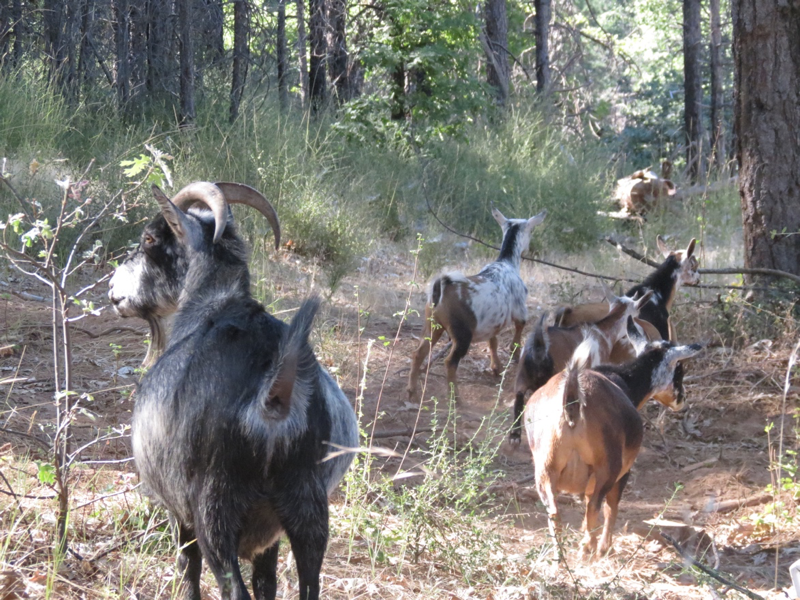
Bamboo’s new herd members are Mama Lu (aka Shanti) and Mama Bu (aka Sheba). They are sisters, each with two kids, one boy and one girl each. We are referring to them as family Lu and family Bu. The Lu kids are James and Lulit, the Bu kids are Baka and Obi.
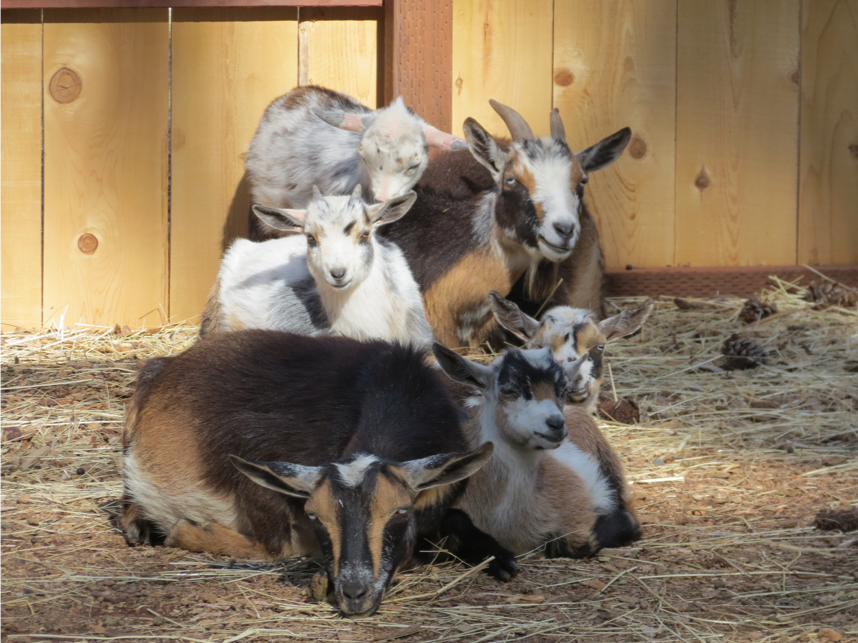
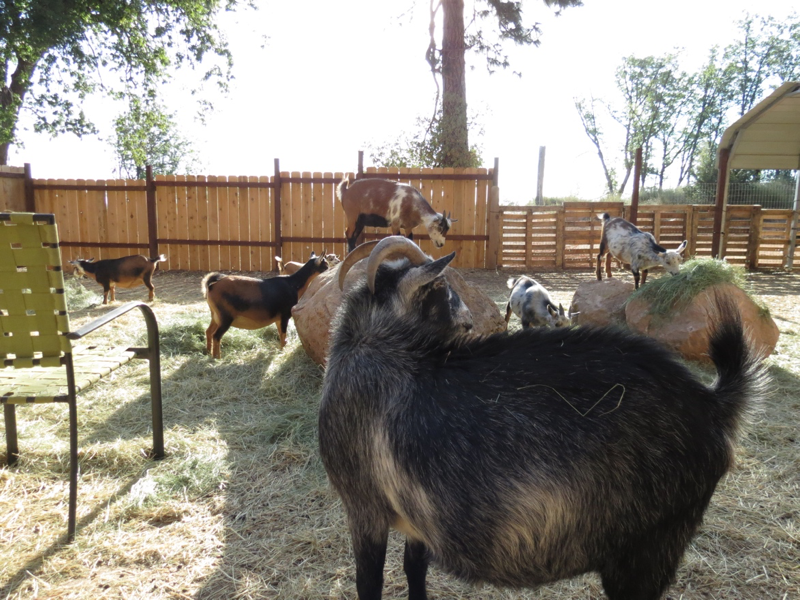
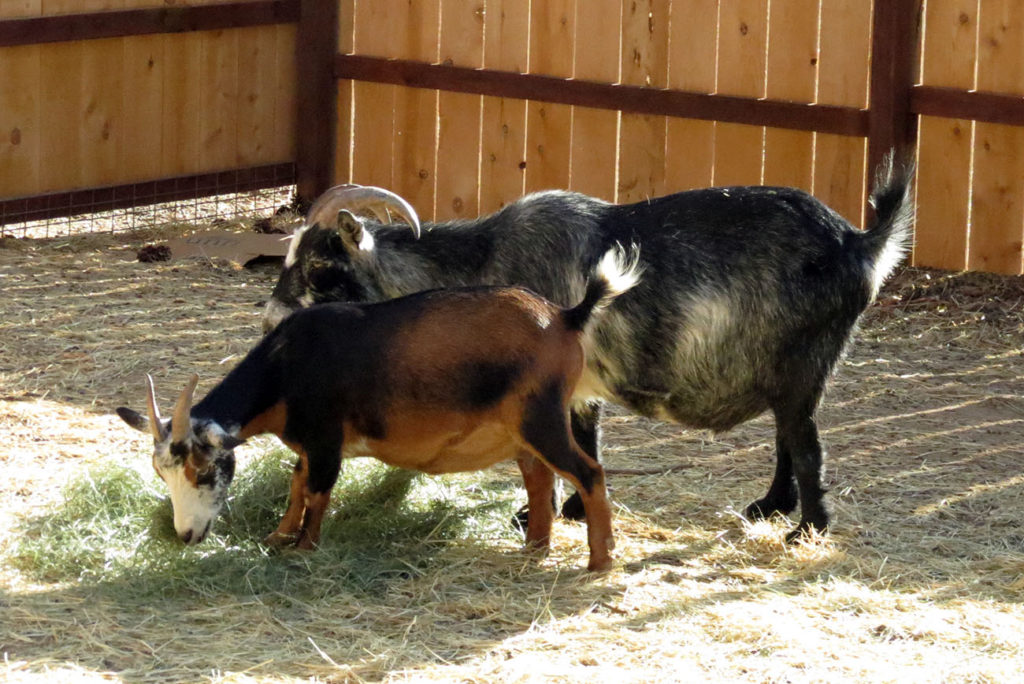
Bamboo has taken strongly to Mama Lu and treats her with tenderness and affection. Mama Lu is mostly in charge and will courageously play horns with Bamboo even though she is much smaller. In general, her tactics have been covert, well thought-out sneak attacks that show Bamboo she has the advantage of greater awareness. Greater awareness among herd cultures, and in any culture, is one of the characteristics that makes a leader. Sometimes Bamboo will show his strength with Mama Lu, but never beyond what she is comfortable with—with Mama Lu he is always a gentleman. In general, Bamboo tests the kids by moving them and taking territory, and this has been good for their development.
Bamboo’s new herd has all the dynamics needed for the goats to have their “culture of transmission.” This “culture of transmission” that Adi Da Samraj pointed to as being important to preserve with the non-humans in our care has shown itself as being incredibly healing and harmonizing for certain characters. Since Bamboo has been receiving a full cultural experience, he’s been demonstrating a much better understanding of gentle etiquette with humans.
This was also how it worked for Baraka, the young camel, who was quite boisterous and high energy in young adolescence. Baraka was human-raised and handled a lot, similar to Bamboo. As he became integrated with the camel herd in the years past he has become very formal and polite with humans. Baraka transformed very dramatically by the nourishment of his cultural transmissions. Through this consideration it is clear to us here at Fear-No-More Zoo that cultural transmissions, human and non-human, are very healing and balancing, and demonstrate how cooperative community (or cultural wisdom or herd wisdom) are key for growth in relationship.
May the human world recognize and embrace the non-humans as not different at heart, and may we learn to value and protect the non-human world beyond our comforts and securities. May the “Prior Unity” that pervades us be felt deeply at Heart and completely by all.
Support Fear-No-More Zoo
We are grateful for your support of Fear-No-More Zoo! All of the money donated to Fear-No-More Zoo goes toward our ongoing, basic expenses which directly supports the animals. These include hay, grain for treats and training, special supplies, salt and minerals, hoof trimming, veterinary care, infrastructure, repairs, and continuing education for staff. In the future we hope to raise monies to upgrade our facilities and infrastructure to better host visitors.

Connect with us on Facebook, Instagram, and YouTube
Connect with us on social media to stay up to date with what is happening at Fear-No-More Zoo!

